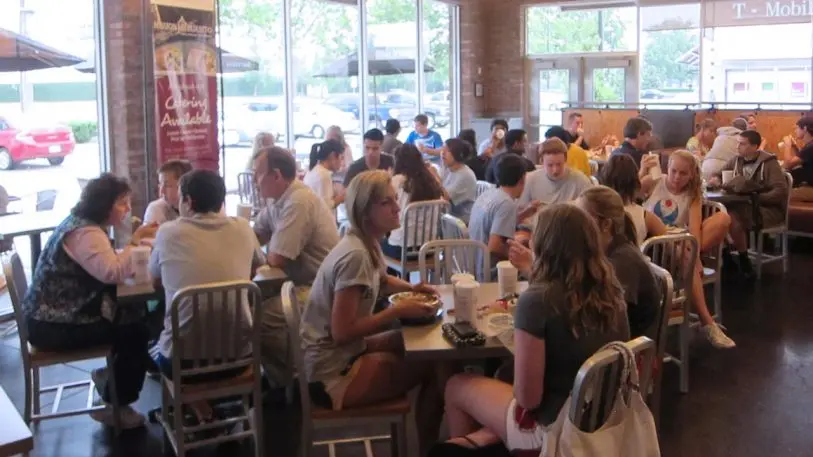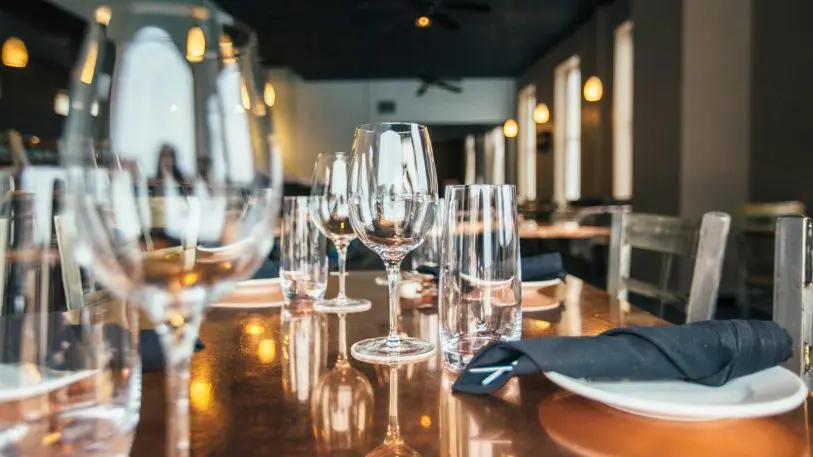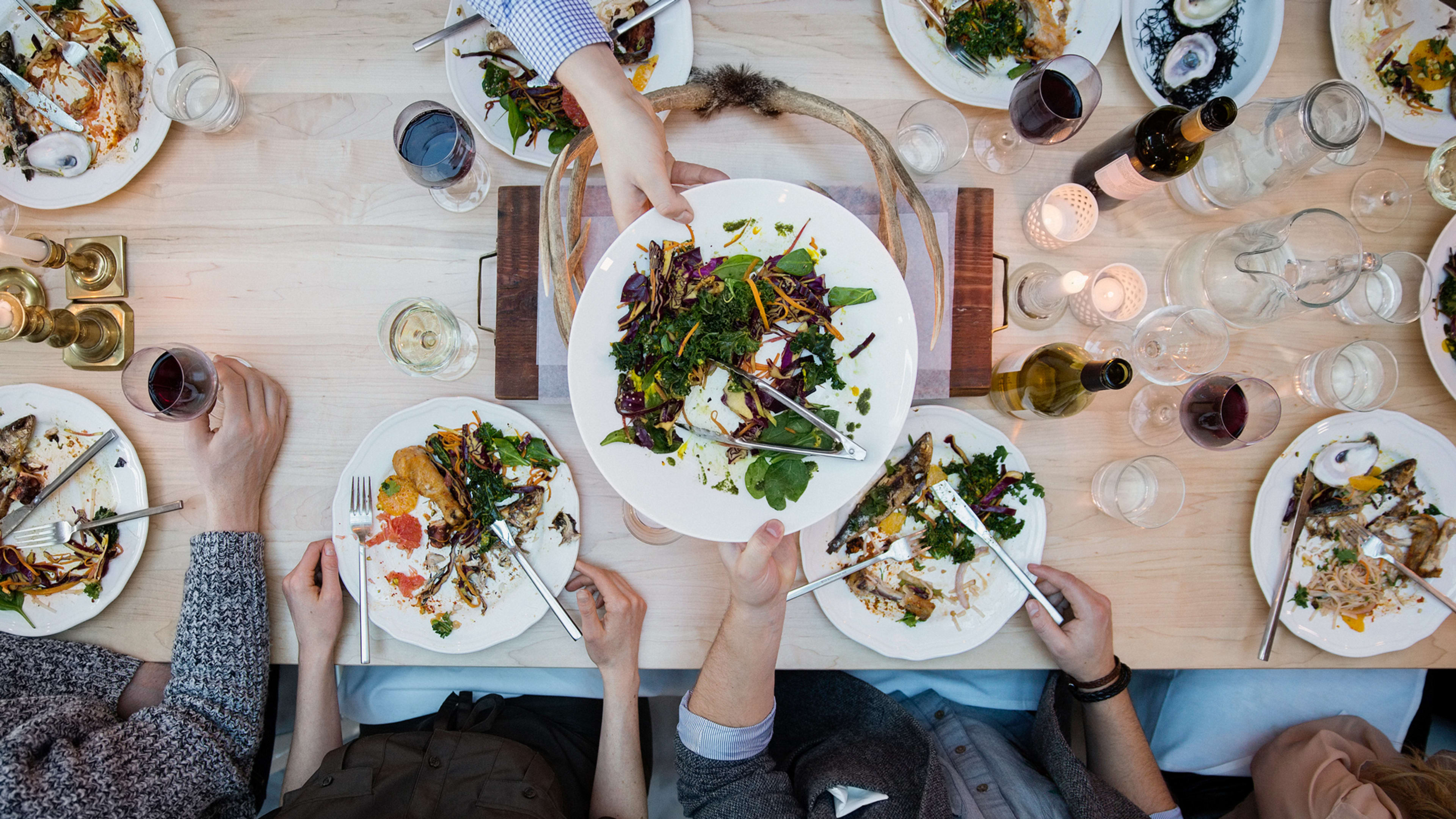For every startup that achieves meteoric success, there’s another destined for mediocrity. At first, that second path seemed to apply to Houston-based GroupRaise, an online reservation platform with a philanthropic hook: The company catered to large groups of 20 or more who want to hold an event at a local in restaurant, which in exchange for the large reservation agreed to give away a percentage of the check to a nonprofit chosen by the group.
It was an easy rally point: If a sorority wanted to raise money for breast cancer awareness, or church group sought to bring clean water to the developing world, they could just organize a group meal. From the time the company launched in early 2011 to mid-2015, it had yawn-inducing growth, recruiting just 500 restaurants in about 30 cities. (A similar if slightly more broad contemporary didn’t fare much better. Remember Carrotmob’s social-change powered “buycotts”?)
Then a strange thing happened. In the 18 months from July 2015 to the end of 2016, the platform achieved 900% growth, rallying to 5,000 restaurants in over 150 cities. Earlier this year, in April, it received $1 million in venture capital from Techstars Ventures, Kapor Capital, and several other new partners. Today, the site has over 8,000 restaurants in 300 U.S. cities, and is piloting or has gone wide with national deals with 26 major chains in the fast-casual or family dining space including California Pizza Kitchen, Outback Steakhouse, Fazoli’s, Tijuana Flats, McAlister’s Deli and Moe’s Southwest Grill.

“We are really like a hyper-local community marketplace,” says Baptiste, noting most people who would use the service are likely groups that have already formed–they just need a nearby meeting place. As company growth lingered, Baptiste and his cofounders began to think about an anecdote in the business-advice tome Made To Stick in which authors Dan and Chip Heath recount a tale of a local newspaper remaining relevant against national agencies because an editor pushed its strength, the ability to consistently list the names of residents impacted by the issues being reported on. The paper prided itself on reflecting lots of community voices.
Rather than worrying about how to achieve more rapid national expansion, GroupRaise reframed the question. It appeared that in many cases local restaurants and cause-groups were already aware of each other but didn’t realize there was a way they could benefit each other. “How do we help people get connected to communities within one-mile radiuses?” Baptiste says of making it clear to both philanthropically minded clubs and groups and local restauranteurs—both of which likely know of each other by name—that there was an obvious relationship there to be had. “[That meant] really thinking about, ‘What is the product experience like in each five-mile [zone] in the U.S., and how do we be a community partner that lives at that level.'”
So GroupRaise approached large college campus organizations, directly, and offered them a specific menu of choices: The names of the nearby places and best days to host a giveback meal. For restaurants, GroupRaise mapped out all of the nearby groups the restaurants could be bringing in if they joined the platform, and let those places designate specific deals on certain days to drive business on otherwise slow nights. The result was a list of names–a sort of community directory–that representatives in both camps might look at and realize they’d probably wanted the chance to either eat there or invite those folks to eat. “We wanted every time we talked to someone always to reference the name of someone in the community.”
The service remains very similar to how it started. Users sign up to create a meal page, which lets them share an RSVP request with potential attendees over Facebook or email. Those people who register receive reminders of the upcoming event, and how much the restaurant will give.
Currently, restaurants can earmark between 15% and 50% the proceeds to whatever 501c3 the group dining at the restaurant designates. These places advertise exactly what they’re giving back per meal; the country-wide average allocation is about 17% of the final bill, with the average number of attendees per event at around 50.
While he won’t disclose firm numbers, Baptiste says there are currently thousands of events per month. The group has raised more than $1 million for charity since its inception, but with the new growth hopes to clear $1 million more this year alone, and ramp up to about $2 million annually within a few years.

In business parlance, eateries might call that a “profitable customer acquisition strategy,” says Baptiste, but it applies to encouraging people to become more active in the charity world, too. “If you’re willing to go and eat for [a cause] . . . then that makes you a donor.” The hope is that the cause-alliance continues. “We think the first dollar is typically the hardest to get.”
Recognize your brand’s excellence by applying to this year’s Brands That Matter Awards before the early-rate deadline, May 3.
